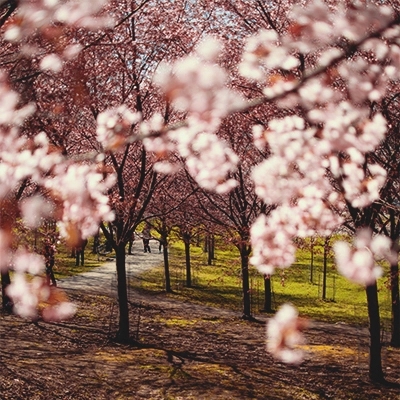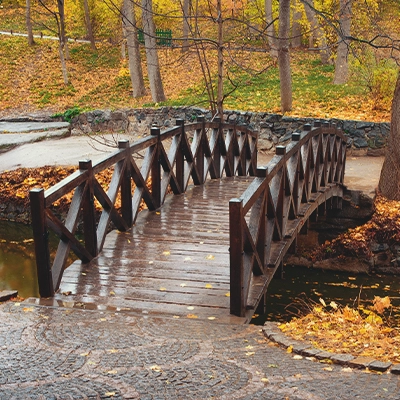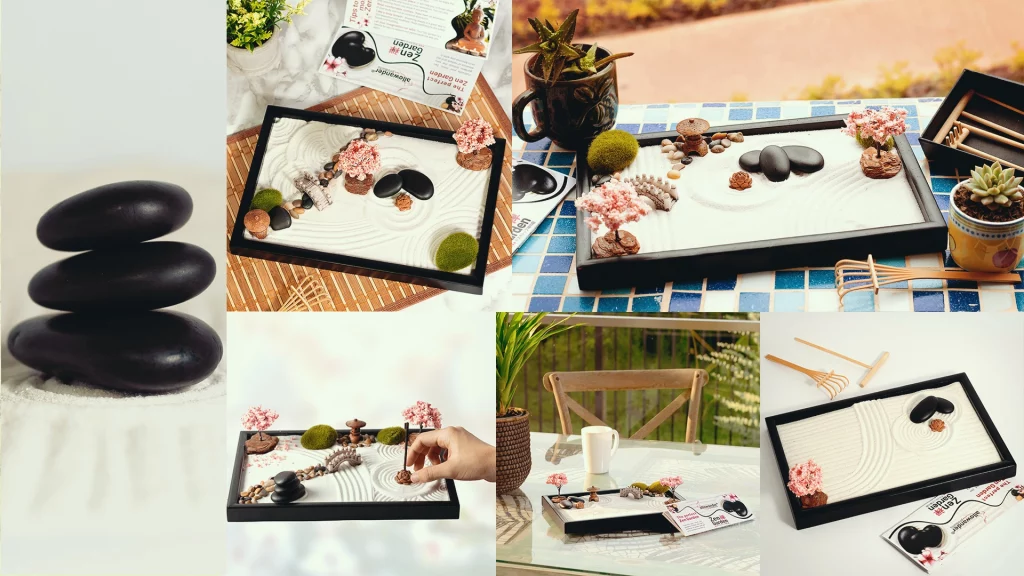Cultivate your mind.
Zen gardens imitate the very essence of nature and aid us in becoming one with it.
Use yours to aid meditation with its soothing environment and the symmetry of its elements. The sand represents bodies of water and the rocks portray masses of land. Customize your Zen Garden by rearranging its elements and raking its sand to create waves, ripples, or any pattern you want. Sand raking is a great way to reduce stress and anxiety, relax and find tranquility.
Meditation and relaxation
Unlike others, Zen gardens have never been meant to walk by them. They are meant to be contemplated from a certain distance. Zen monks used these gardens to meditate and reach a state of absolute concentration. While observing and trying to interpret the landscape, they took their minds and bodies to a place where rocks are mountains, and sand is the sea. Relax by raking the sand and rearranging the elements of your own Zen garden, meditate while observing it, and make your mind and body one with nature.
Triangular-toothed rake
Make shallower patterns.
Smoother tool
Smooth the sand before creating new patterns.
Circle-drawing tool
Make perfectly circled patterns.
Adjustable rake
Create wide and delicate patterns.
Four-spike rake
Draw delicate and thin patterns.
Detailer stylus
Create free patterns with this freehand tool.
Tools
Endless possibilities at your hand with a wide variety of different tools that will get you hours of continuous experimentation in the mesmerizing art of sand raking.
Features
We have invested a lot of time and effort in picking the best Zen Garden accessories to bring you the perfect Zen Garden experience.

Rocks
Symbol of strength, power, and eternity. They carry a long history within them, and they can keep still and unchanged for an immeasurable long time. In a Zen garden, they also represent masses of land on the sea of sand.

Cherry blossom
One of the most beautiful spring flowers in Japan. They are a sign of its beginning and a time of renewal. They represent hope for a productive growing year, and they are also related to human existence, since their flowering time is ephemeral.

Bridge
The link between humans and nature. By walking across a bridge, a person travels through planes of existence, moving from the human world to a wider world where other beings inhabit. It allows the visitors to enjoy a moment of harmony and union with nature.

Lotus flower
The flower of rebirth and spiritual enlightenment. Lotus flowers submerge into wetlands every night and bloom again the next morning, with their perennial beauty. They can survive in a great variety of soil and weather conditions, and their seeds can withstand thousands of years without water.

Japanese stone lantern
Representation of enlightenment, love, and protection from evil. They have been used as sacred light sources in shrines and temples in Japan since ancient times; lined to illuminate paths. However, they only became popular when they were also included as ornaments in tea gardens by tea masters.
Tips to make the most of your Zen garden
Take breaks
Resting is essential to improve productivity, so take short breaks, enjoy your Zen garden, and get back to work refreshed.

Enjoy your breaks
They are the time to dedicate to yourself, so appreciate the moment, put your mind at ease and relax.
Find a cozy and quiet place
It will help you to forget about everything else and focus on your relaxation. You can also play relaxing music you enjoy if you prefer.

Wear comfortable clothes
Make them an extension of your body and not an external distractor.
Take a deep breath
Breathing deeply is a great way to find relaxation and meditate. Many meditations are solely based on breathing.

Let your imagination run wild
Your Zen garden is a canvas for you to explore and personalize the way you want.

